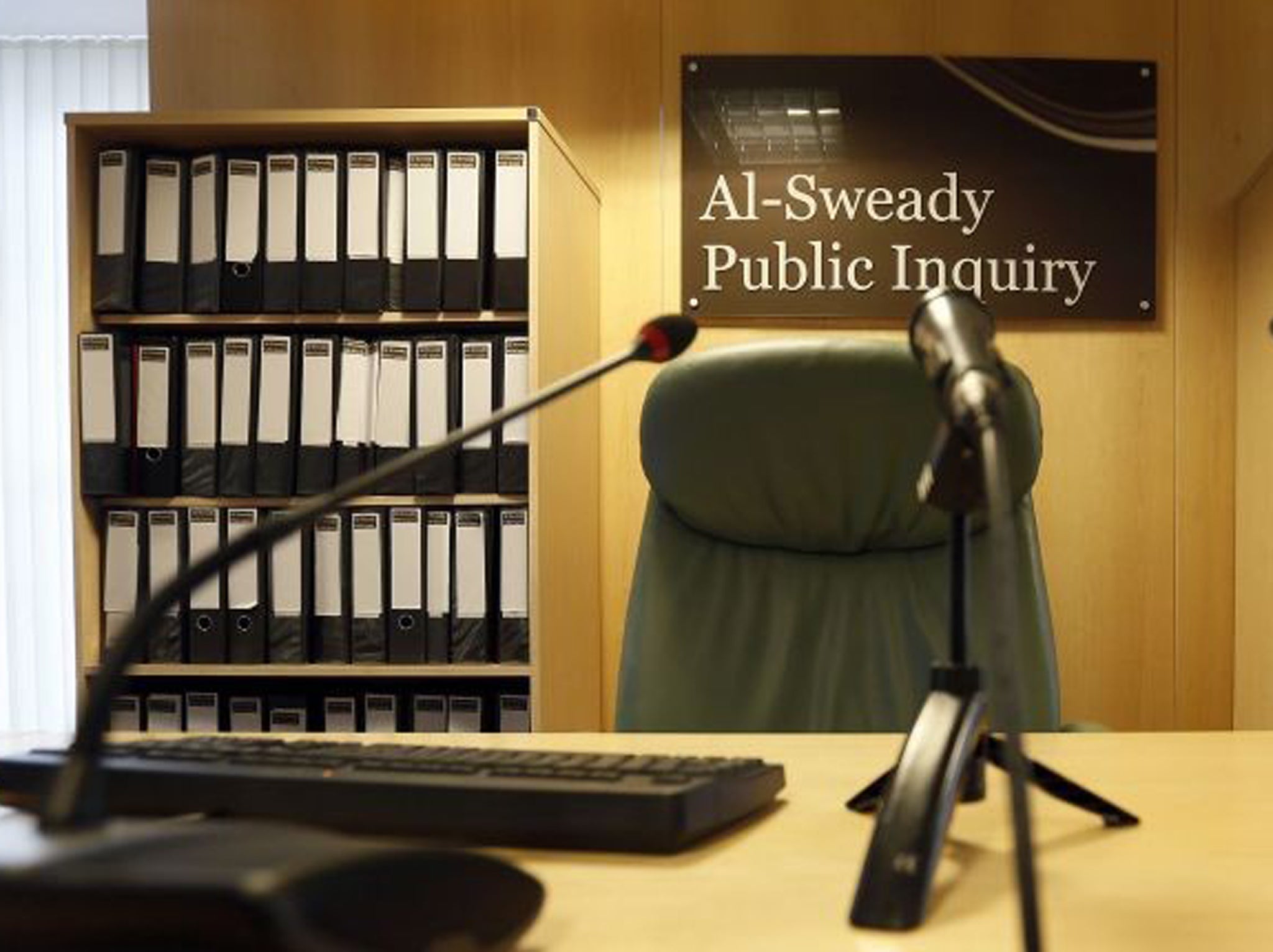Al-Sweady inquiry: 'signs of torture' found on Iraqi bodies handed to families by British troops
Year-long hearings begin into contested allegations that injured insurgents were taken back to army camp after brutal battle and tortured or killed

Bodies of Iraqis handed back to their families by British troops showed signs of torture and apparent mutilation as well as multiple bullet wounds, according to local doctors.
The revelation came at the start of the long-awaited Al-Sweady inquiry into allegations that injured insurgents were taken back to an army camp after a brutal battle and tortured or killed – claims that have been vigorously contested by the military.
Graphic photographs of 20 dead Iraqis, the youngest just 14, were shown as Jonathan Acton Davis QC, counsel to the inquiry, opened what is expected to a year-long hearing. The disturbing images showed the blood-soaked and contorted bodies of young men, many with severe facial injuries. Some appeared to be clad in uniforms while others were wearing civilian clothing.
Relatives told the inquiry team that a number of the corpses showed signs of fresh blood when they were returned the day after the battle while some were missing eyes or had injured or severed genitals.
After three years of investigations costing £15 million, the inquiry opened yesterday just weeks before the tenth anniversary of the invasion of Iraq.
Ordered in 2009 after then defence secretary Bob Ainsworth conceded the need for a fresh investigation, it will examine allegations soldiers killed detainees after a fire fight with Shia insurgents, which became known as the battle of Danny Boy, near Majar al-Kabir in May 2004. It will also look into claims five detainees were ill treated both at Camp Abu Naji and later at a detention facility at Shaibah Logistics Base over a period of four months.
“The claim relates to events which began on May 14 2004, when Iraqi insurgents ambushed vehicles belonging to the Argyll and Sutherland Highlanders near to a permanent vehicle checkpoint known as Danny Boy which was some 5km north-east of Majar al-Kabir on route six in Iraq,” Mr Acton Davis said.
“A fierce battle ensued which involved not only the Argylls but also soldiers from The Princess of Wales's Royal Regiment. It resulted in many Iraqis being killed and in two British soldiers being wounded.”
But, he explained, their remained a “stark dispute” as to what happened in the following 24 hours.
“It is the claimants' case that not all of the 20 died on the battlefield, and that at least one of them was murdered by a British soldier after he had been returned alive to Camp Abu Naji,” the barrister said.
The military, however, insists the 20 were already dead but brought into the camp – alongside nine detainees - as it was believed that one of them had been among those responsible for the death of six Royal Military Police soldiers killed by a mob in the notoriously lawless town in Maysan north of Basra eleven months earlier.
“In the ordinary course of events the enemy dead would have been left on the battle field but an order was given to identify the dead to see if there was amongst them an individual who may have been involved in the murder of six British soldiers in 2003,” the QC said.
Mr Acton Davis explained how the inquiry team had tracked down millions of documents to identify thousands that were relevant to their inquiry as well as identify 60 Iraqi witnesses and almost 200 military personnel who will give evidence before chairman Sir Thayne Forbes.
Among those documents, he revealed were a raft of Iraqi death certificates which listed a catalogue of injuries including multiple bullet wounds and missing body parts.
The Iraqi doctors assessed that three of the dead – including 19-year-old Hamid Al Sweady after whom the inquiry is named – showed signs of torture.
Footage of the bodies after they were handed over by the British to be taken by ambulance to Al Sadr Hospital, broadcast to the inquiry, showed distraught relatives opening body bags to try and identify men.
Doctors and family members claimed that, while some of the corpses were rigid, many showed signs of fresh wounds and blood. Among the injuries they noted were eyes that were missing, genitals that were damaged or completely severed, throats that had been cut, marks around the neck and wounds that appeared to have been left by plastic handcuffs or boot prints.
Full post mortems, however, were never carried out as a gun fight broke out outside the hospital in which the Chief of Police of Majar al-Kabir was killed and the bodies were immediately returned to the town.
Mr Acton Davis is expected to continue with his opening statement for the rest of the week when lawyers for the Iraqi survivors or relatives, the Ministry of Defence and soldiers will give brief statements.
The inquiry, which is expected to last until February, is due to hear from 15 Iraqi witnesses in person as well as a further 45 via video link from Beirut as well as up to 200 military personnel.
Subscribe to Independent Premium to bookmark this article
Want to bookmark your favourite articles and stories to read or reference later? Start your Independent Premium subscription today.

Join our commenting forum
Join thought-provoking conversations, follow other Independent readers and see their replies